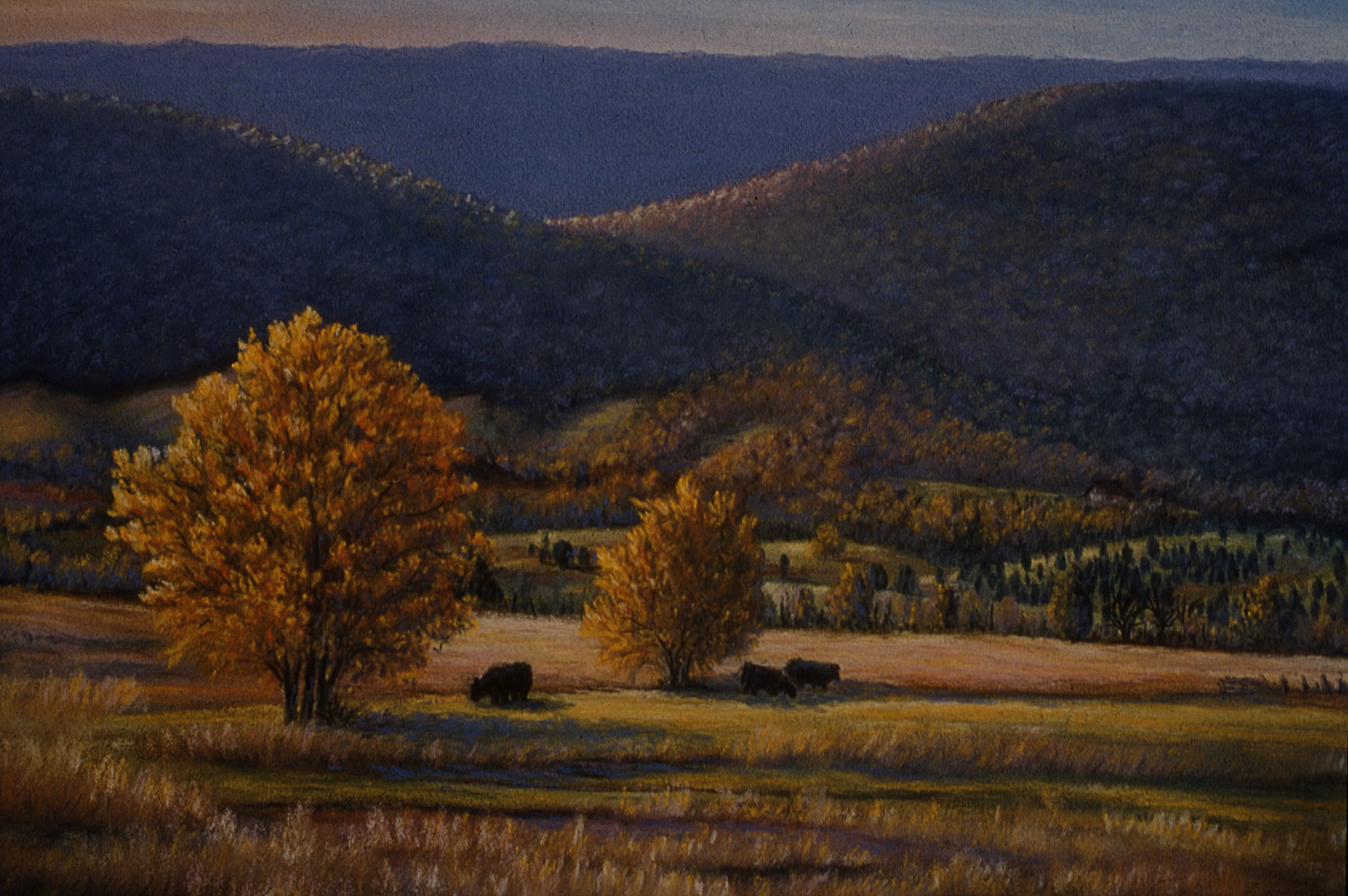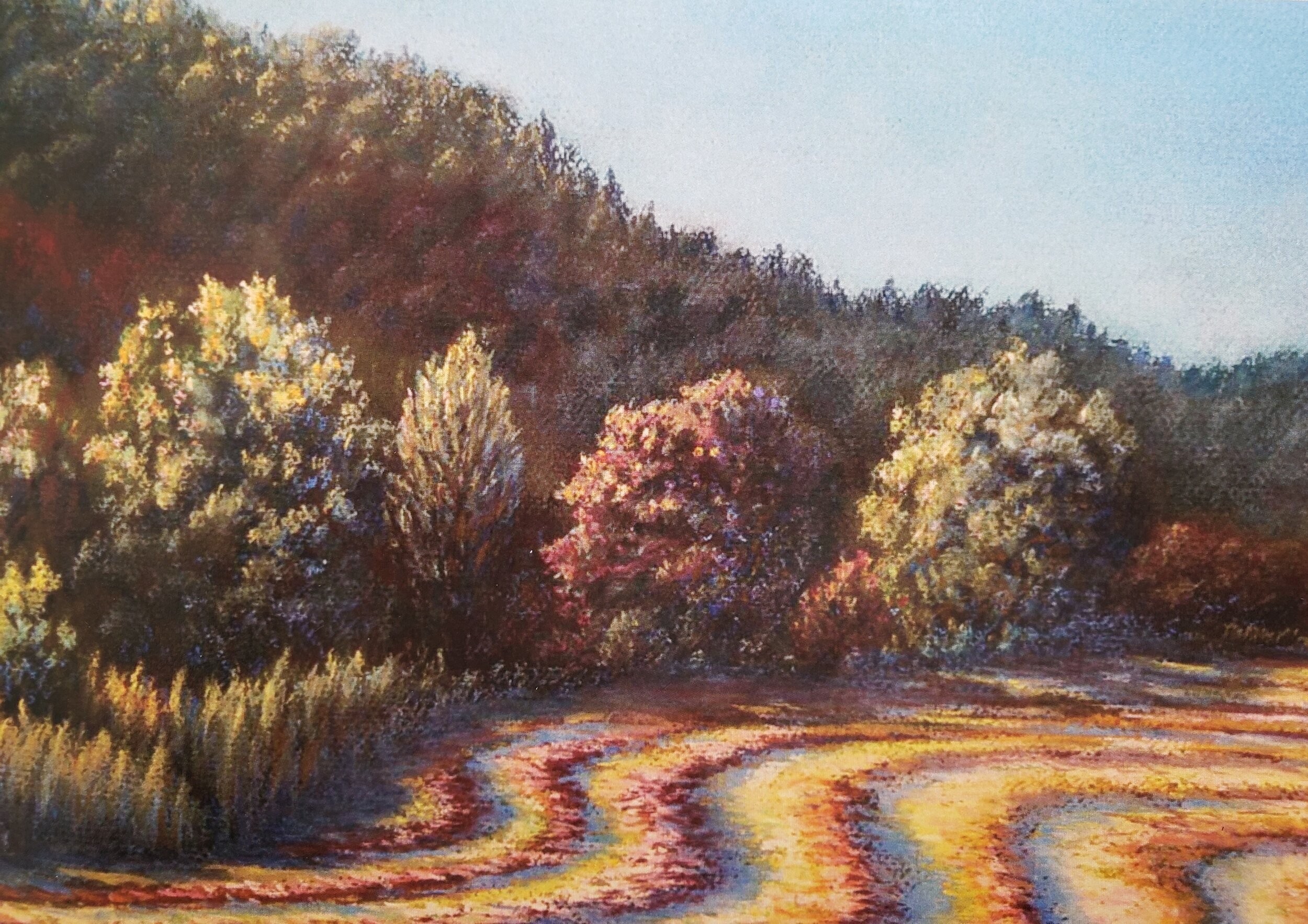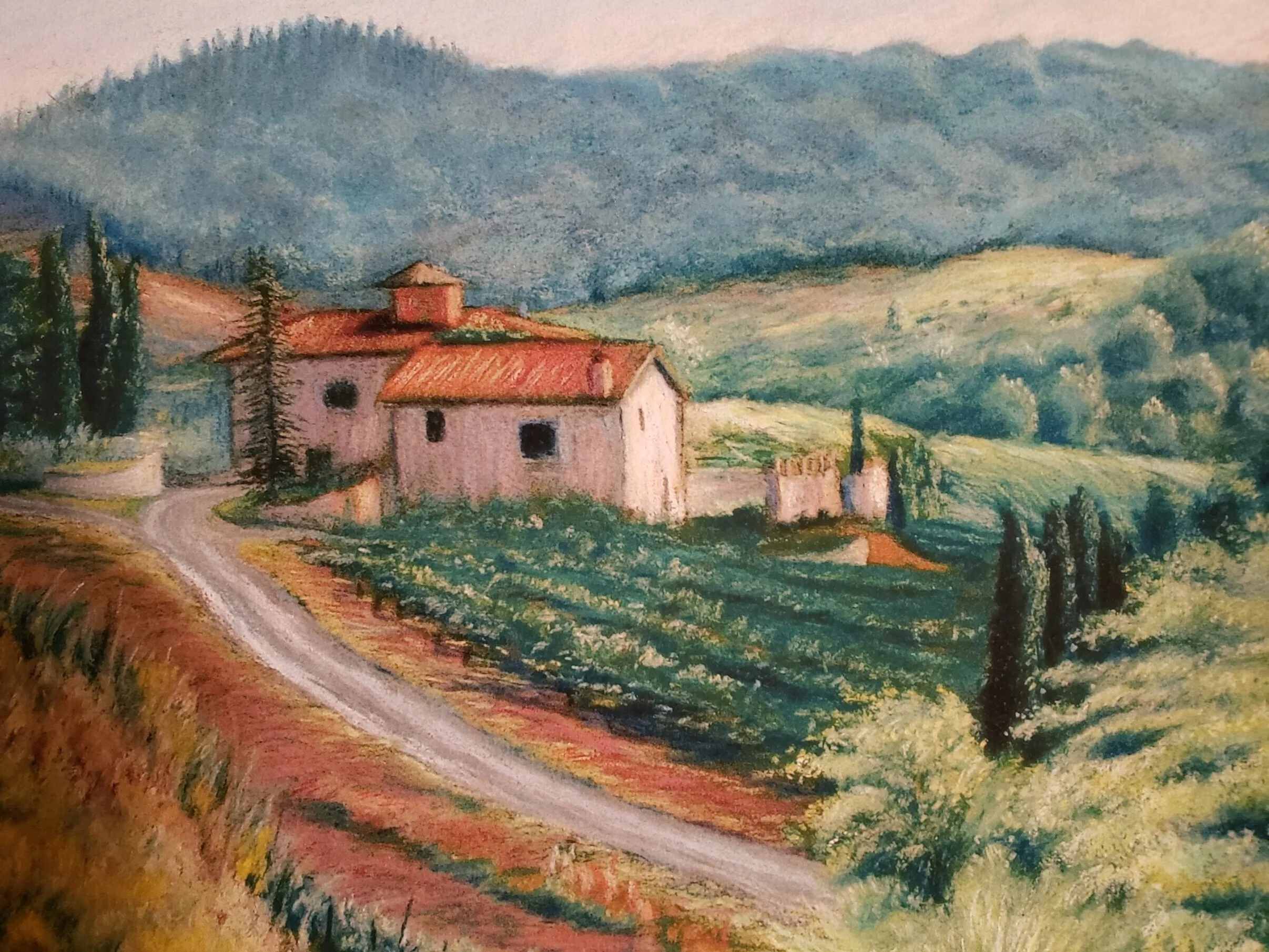
Lunice Creek

Smoke Hole Overlook

Where the North Fork Divides

Allegheny Evening

Morning Field

Twilight across the Ridges

Summer Hayfields

Morgantown Road Barn

Tuscan Hills

Palo Duro Canyon

Crossroads

Summer Meadow

Storm across the Ridges

Autumn Magic on the North Fork

Dolly Sods Mud Time

St. George Island Evening

Noon Beach Walk

St. George Island Morning

Forgotten Coast Beach Path

Morning Kiss in the Marsh Mist

Setting the Sun on the Loop

Misty Marsh River Path
The Pastel Medium
My choice of using pastel besides oil paint in the past few years has been my attraction to its richness of color and permanence when applied to conservation ground and archival framing techniques. The brilliance of pastel and variety of colors whose tiny particles reflect light like a prism, provide power and stability in finished form. Pastels should not be confused with chalk-limestone impregnated with dyes, but rather are sticks of compressed pigments (pure color) that are ground into a paste and then held together with a binder of gum or kaolin clay. Having no liquid binder prevents the oxidation process over time that often happens since there is no drying time (color change) in time as is the case with some other media. As the pastel sticks are applied to paper—usually a paper with an abrasive finish, or “tooth,”—the ground (surface) will hold the pastel and become covered in layers of color as a pastel painting. Since I choose not to use much fixative on my pastels, (usually none on the final layer) a finished work in pastel for me, means framing it under glass for protection with archival framing techniques.
The origins of pastel can be traced back to the 16th century. Following its invention by the German painter, Johann Thiele, the Venetian painter, Rosalba Camera, was one of the first artists to make consistent use of this medium in her work. Other noted artists such as Watteau, Delacroix, Millet, Manet, Renoir, Toulouse Lautrec, and Bonnard, to name a few, used pastel in finished artworks rather than just for sketching purposes. Perhaps the most prolific user of pastel was the 19th-century Impressionist, Edgar Degas. He, in turn, introduced it to Mary Cassat, who brought this technique to the American art scene around Philadelphia and Washington in the 1880s. In the early 1880s , Sothby Parke Bernet sold at auction, two Degas pastels for more than three million dollars each.